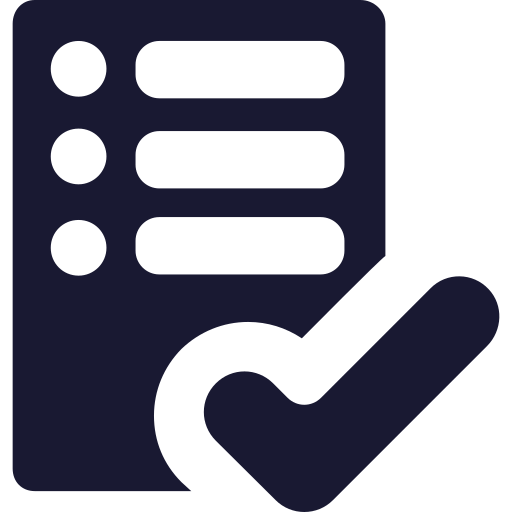Self-Directed 401k | How to Use Physician Retirement Account to Fund a Real Estate Deal?
“Ninety percent of all millionaires become so through owning real estate.” – Andrew Carnegie
In this chapter you will learn how a physician can use a retirement account (e.g. self-directed 401k) to fund real estate investments.
Old is Gold
- Real estate investing is one of the oldest, tested methods of creating long-term wealth. Its ability to generate multiple revenue streams makes it a popular investment instrument for investors of all ages.
- In fact, financial experts even consider real estate as an excellent asset for retirement accounts. Yes, you heard that right. The IRS allows individuals to invest in real estate using their retirement funds.
Can You Really Use Your Physician Retirement Account in Real Estate?
The Relevance: Physician Retirement Account (e.g. self-directed 401k) to Fund a Real Estate Deal
- Since we are trying to keep this content relevant to physicians in America, let us take a real-life retirement situation. According to the US Department of Labor, the median pay for surgeons and physicians in America stands at $208,000 USD, significantly higher than the average US worker.
- An average American is likely to change as many as 12 jobs in their lifetime, which means they have multiple retirement accounts with several custodians.
- The general trend is to invest these retirement funds into stocks, bonds, mutual funds, and other traditional asset classes.
- Our team decided to explore alternative investment assets that you can add to your retirement portfolio, and real estate was the number one wealth generation instrument we discovered. Let’s find out how you can invest in real estate through your retirement account.
It’s Time to Make Use of Your Physician Retirement Account
6 Steps for a Physician to Use a Retirement Account to Fund a Real Estate Deal (e.g. Using your self-directed 401k)
- Step 1: Open a Self-Directed Retirement Account
- The first step is to consolidate one or more of your multiple traditional retirement accounts into a self-directed retirement account. Your traditional retirement account (401k, 403b, 457b) are held by a custodian. Contact that custodian and tell them your plan for opening rolling over a traditional account into a self-directed account. Not all custodians offer self-directed retirement accounts. In that case, do some research and/or consult your account to get referrals for custodian that offer self-directed retirement accounts. After that, roll over your funds into your new self-directed retirement account. There are many types of self-directed retirement accounts. Self-directed IRAs and Solo 401k retirement plans are quite popular among investors planning to invest in alternative assets such as real estate, precious metals, or other digital assets.
Self-Directed IRA or Solo 401k Plan
You can choose between a self-directed IRA and a Solo 401k plan. Here is a brief comparison of these retirement accounts.
| Features | SD IRA | Solo 401k |
| Alternative Investments | Yes | Yes |
| Custodian Consent | Yes | No |
| Transaction Fees | Yes | No |
| Participant Loan | No | Yes |
| UBIT* on Leveraged Real Estate | Yes | No |
| Annual Contributions | $6,000 + $1,000 USD (Catch-up contributions) | $56,000 + $6,000 USD (Catch-up contributions) |
| Built-In Roth Contributions | No | Yes |
To open a Solo 401k account, you must have some self-employment activity going on at the time of opening the account. What this means is, you need to be the owner of a small business, and be receiving a W-2 from your business to be able to contribute to solo 401k (independent contractors, locum physicians, business owners, or solo proprietors working for their company, and etc. – are eligible)
Note: The income you make on self-directed IRA is subject to “Unrelated Business Income Tax (UBIT) – rates are similar to corporate tax”
- Step 2: Fund Your Self-Directed Retirement Account Through Qualified Rollovers (e.g. self-directed 401k)
- In this step, you need to fund your self-directed retirement account through annual contributions or qualified rollovers. The IRS allows plan participants to roll over their existing retirement funds into an SD IRA or Solo 401k plan.
- Step 3: Find an Ideal Property for Investment
- Once your self-directed retirement account has funds to invest, find an ideal property to add to your portfolio. It could be a single-family rental, small multi-family apartment, or a commercial building. Make sure that the property has a positive cash flow.
- Step 4: Use Your Retirement Money to Fund the Purchase
- After identifying the ideal property, purchase it with your retirement funds. Make sure that your retirement plan is the title holder of the property. You’ll sign on its behalf as the trustee of the plan. If you require additional funds for the purchase, choose a non-recourse loan (if a borrower is unable to repay the loan, the lender will use the collateral to collect the money, but they cannot go after the borrower’s personal assets).
- Step 5: Pay for Maintenance or Repair from the Retirement Account Only
- It is critical to understand that any maintenance or repair cost associated with this property should be paid through your retirement plan only. The IRS forbids the use of personal funds for the maintenance of this property.
- Note: Make sure to avoid any prohibited transactions throughout your holding period.
- Step 6: Receive Benefits through Qualified Distributions
- Once you reach the eligible retirement age, you can sell the property or receive it as a distribution from your retirement plan. Do understand that you will have to pay the applicable taxes at the time of withdrawal. In the case of a Roth Solo 401k plan, your distributions would be exempted from any taxes at the time of withdrawal. If you are not using a Roth plan, (i.e. if you are using a tax deferred self directed plan [SD IRA or Solo 401k]), you will start to use grow your money in a tax-deferred way, which is preferred by some investors.
Conclusion | Physician Retirement Account to Fund a Real Estate Deal
In addition to providing consistent rental income, real estate tax deduction, and capital appreciation, real estate investments offer diversity against market movements. If you’re wary of the market volatility and need robust income-generating assets, or if you want to sell some of your stocks portfolio at an all-time high and reinvest that capital, real estate is an ideal choice for you.
Do you have real estate in your retirement portfolio (e.g. self-directed 401k)? Tell us in the comments section below.
Here at PhysicianEstate, we welcome all physician entrepreneurs to learn about commercial real estate investments, rental property investments, and wealth generation. We encourage all physicians to eventually become real estate physician investors. We know a great deal about Who – What – Why – How.
Stay in touch with us by signing up for our newsletter. The newsletter will keep you up to speed on the current real estate investments we are looking at, provide physicians with investment opportunities, and much more.
Legal Disclaimer: This is not investment advice. I am not a legal and/or investment advisor. This is my personal blog, and all information found here, including any ideas, opinions, views, predictions, forecasts, commentaries, suggestions, or stock picks, expressed or implied herein, are for informational, entertainment or educational purposes only and should not be construed as personal investment advice. These are my views, it is not a production of my employer, nor is it affiliated with any broker/dealer or registered investment advisor. While the information provided is believed to be accurate, it may include errors or inaccuracies. To the maximum extent permitted by law, PhysicianEstate disclaims any and all liability in the event any information, commentary, analysis, opinions, advice and/or recommendations prove to be inaccurate, incomplete or unreliable, or result in any investment or other losses. You should consult with an attorney or other professional to determine what may be best for your individual needs. Your use of the information on the website or materials linked from the Web is at your own risk.



















